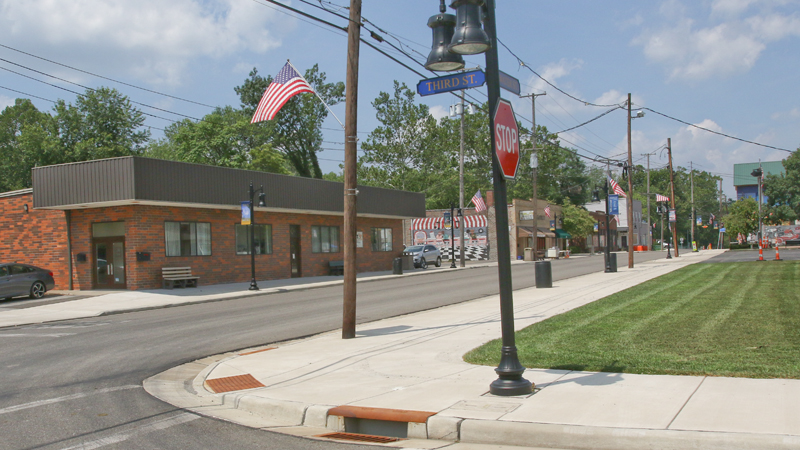Lowellville mayor discusses plans for village's future

By GRAIG GRAZIOSI
ggraziosi@vindy.com
LOWELLVILLE
The grand vision
for the village’s future – as envisioned by Mayor James Iudiciani – is a two-pronged strategy that simultaneously develops riverfront properties while building a backbone for future industrial investment in the area.
Movement on the riverside revitalization has already begun. In October, the village broke ground on its plan to remove a dam and build a canoe livery in hopes of opening up the river for recreational use.
Future development along the river’s edge includes proposals for condos with underground parking, buildings with retail and restaurant space and a small shoreline park.
With the dam removal project underway, the village has moved on to building an access road from McGaffney Avenue to an area that will become the site of Lowellville’s industrial park project.
That construction is funded through a $500,000 Appalachian Regional Commission grant secured by U.S. Sen. Sherrod Brown, D-Ohio, in 2016.
The road, when complete, will serve as the primary access for a series of five, 25,000-square-foot industrial buildings.
Though he couldn’t go into specifics, Iudiciani said at least one of the buildings has a prospective tenant.
“There’s a company we’ve been in discussion with that wants to put a (research and development) facility here in the village. The company plans to work on six energy-related technologies there. We’re hoping that they’ll then move into one of the other buildings and use it as a manufacturing center for the technologies they’re developing,” Iudiciani said.
Last week, a group of local mayors, including Iudiciani, met with Brown to voice the projects they’d like to see undertaken in their cities.
One of the projects each of the mayors agreed they’d like to see undertaken is the installation and connection of fiber optic cable to their communities to ensure high-speed internet for their residents and businesses.
“Here in Lowellville, I know CSX, Norfolk Southern and First Energy all have fiber optic lines, so we’d just need to run our own connections,” Iudiciani said. “We want to attract college students and young professionals as well as business owners – they all need reliable, high speed internet. So we’ve got to get fiber going here.”
 43
43
